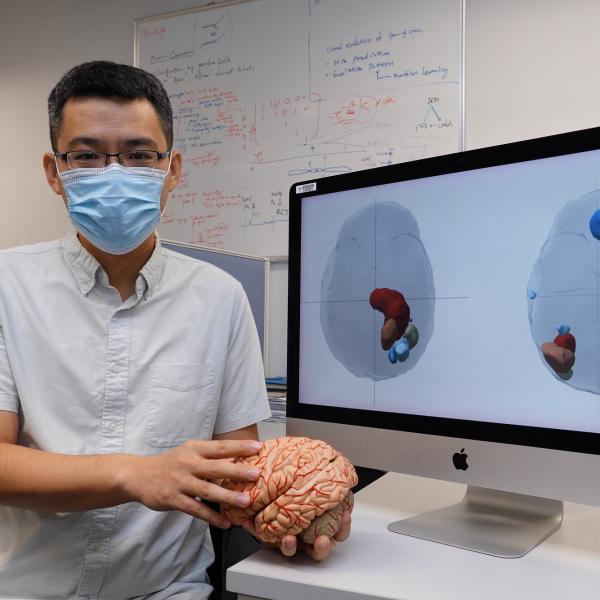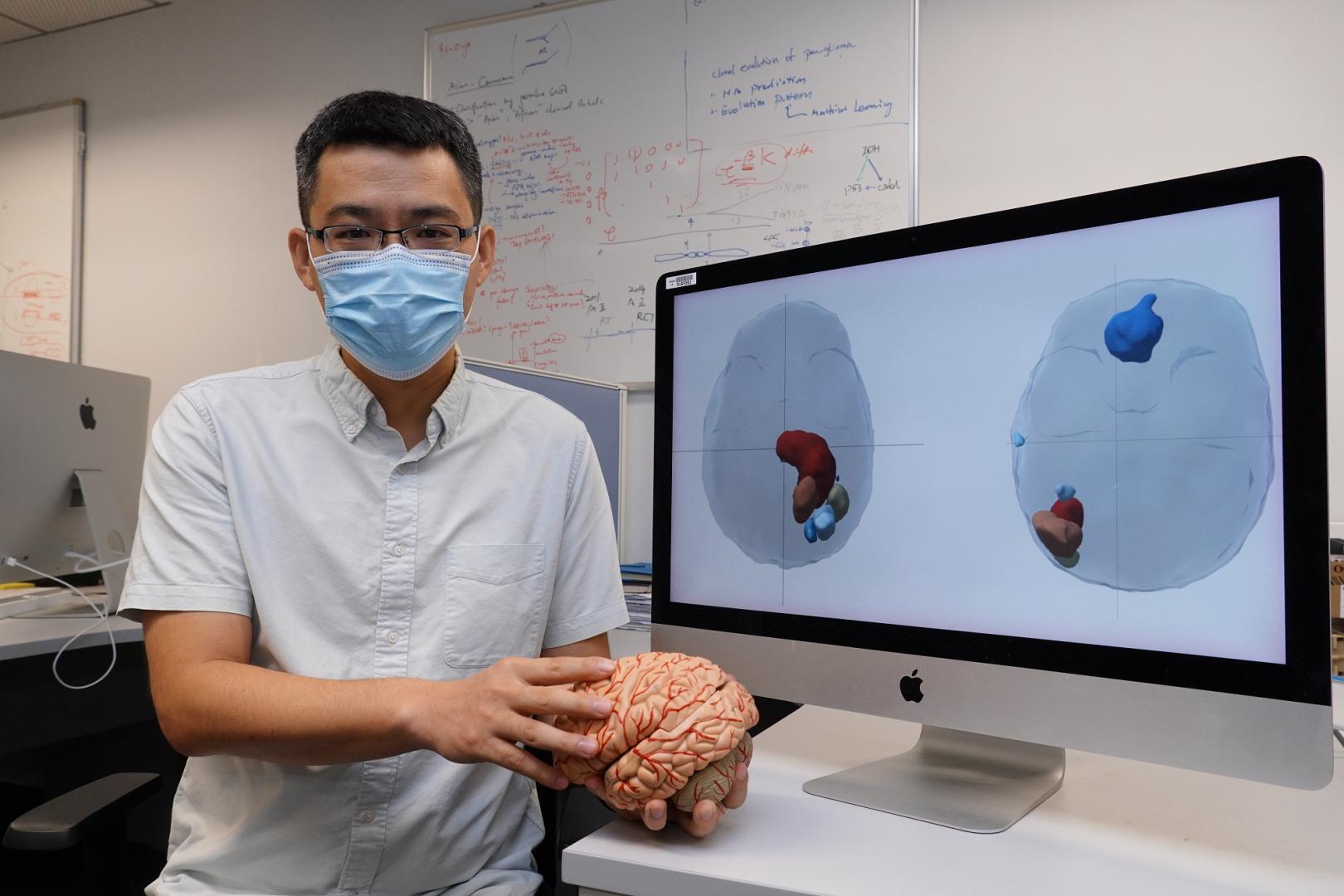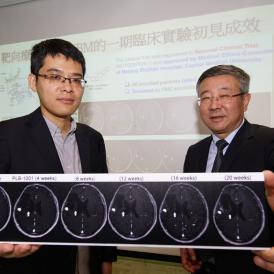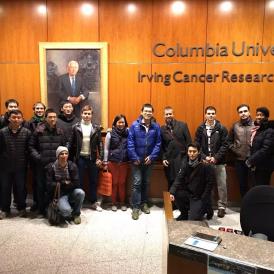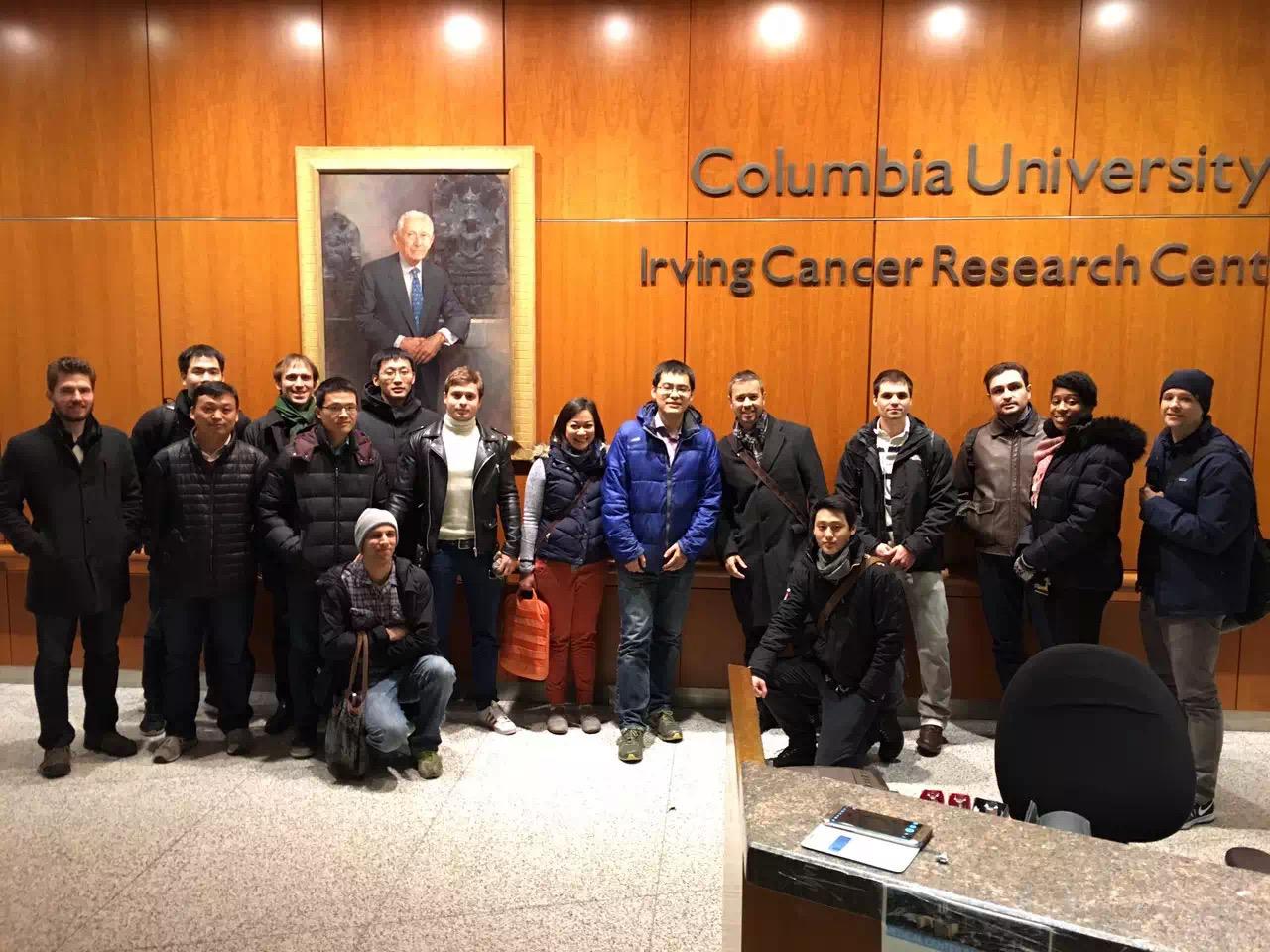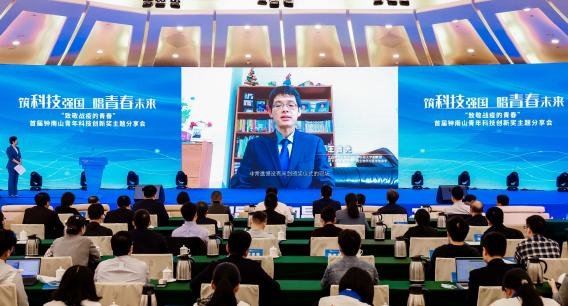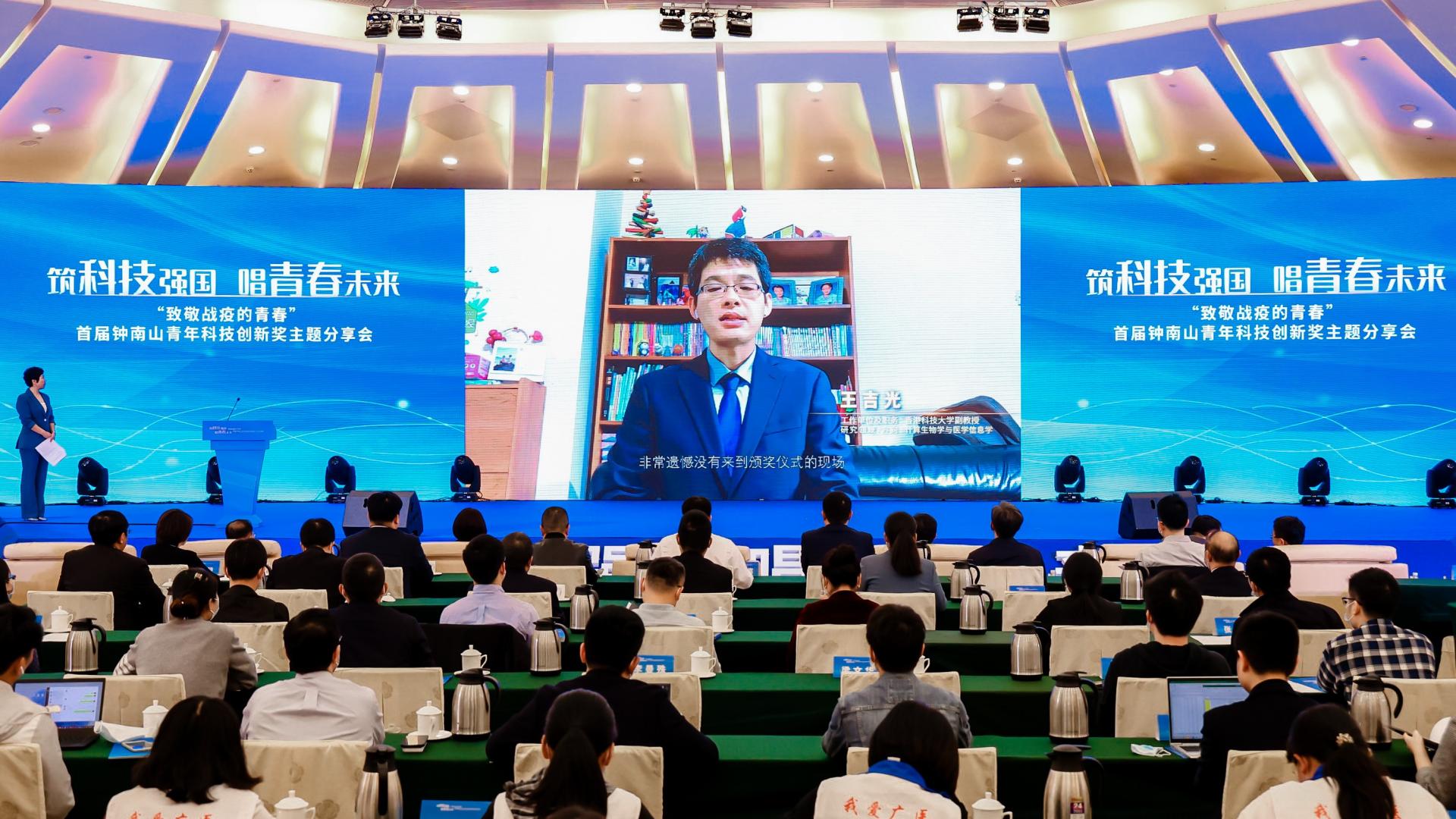Fighting Big Diseases with Big Data
For someone who spent his childhood thinking why people fell ill, how we could avoid it, and why we die, it’s important for Prof. WANG Jiguang to ask the “right” questions. Now, every day, the data scientist asks: How can data help to cure deadly diseases? and can we treat cancers in new, more effective ways?
The associate professor working at both the Division of Life Science and the Department of Chemical & Biological Engineering at HKUST is a rising star in the field of computational biology, the science that applies computational methods to analyze large collections of biological and medical data to make predictions or informed decisions. The unique approach has enabled him to break the bottlenecks in diagnosing and treating some of the most intractable diseases, such as brain cancer.
Machine learning in medical diagnosis
The conventional medical approach to diagnosis and treatment is for surgeons to make clinical decisions largely based on experience. But for years, his team has been one of the groups of scientists to draw insights from unbiased clinical data from across the world, so that the knowledge can help develop mathematical models and machine learning methods to identify optimal treatments.
“If we can find a ‘virtual twin’ – someone with similar conditions – for a patient from the database, then we can better predict patient survival and treatment outcome,” says Prof. Wang, who was trained as an applied mathematician.
For instance, he works with partner organizations, including Beijing Tiantan Hospital, which collects clinical data from brain cancer patients, before sharing it with his team for data cleaning, processing, and mining and algorithm development.
In 2021, his team worked with the hospital to uncover a new gene mutation responsible for the non-familial patients of cerebral cavernous malformation (CCM), a brain vascular disorder which inflicted about 10 to 30 million people in the world. In the past, only 20 per cent of the total CCM cases had a known cause and the cause for the remaining non-familial cases remained elusive.
By applying computational methods to the genomic data of CCM patients, the team identified a new genetic mutation named MAP3K3-I441M and revealed its connection with the lesion shown in the MRI image. As a result of their findings, patients with “popcorn-like” imaging appearance can be predicted to be carrying this gene mutation, enabling molecular diagnosis and reducing the reliance on surgical diagnosis, which could bear serious risks including cerebral hemorrhage or new focal neurological deficits.
A mathematician turned scientist
It was for achievements like this that he received notable national accolades, including the Excellent Young Scientists award by the National Natural Science Foundation of China in 2019 and most recently the Zhong Nanshan Youth Science and Technology Innovation Award in 2022. In the latter award’s inaugural year, Prof. Wang is the only recipient from Hong Kong among the 10 awardees.
“I’m very pleased to receive this award. This is a positive development not only for me but also for the team because interdisciplinary research is quite new and challenging. It shows the application of data science to medicine is becoming more and more important,” he says.
Prof. Wang obtained his PhD in Applied Mathematics in 2011 from the Academy of Mathematics and Systems Science of the Chinese Academy of Sciences, where his advisers were deeply involved in the study of optimization theory and its applications to biological questions. They tried to develop tools to understand the topology of complex networks.
He then worked as a Postdoctoral Research Scientist in the Department of Biomedical Informatics at Columbia University and was promoted to Associate Research Scientist of the department in 2015, and eventually joined HKUST in 2016.
“Coming from an applied mathematics background, it felt natural for me to frame biological questions as computational questions,” he recalls. “Some of my PhD classmates went to work in the financial sector, using the same mathematical tool I’m using now for portfolio analysis and optimization. It’s just that I chose to work in the biomedical field.”
The father of two said it was clear from a very young age he wanted to be a scientist. “My family is very supportive of me becoming a scientist. My dad is an educator and he’s very good at teaching different topics, like mathematics, physics, and chemistry. I have long thought being a scientist is the best job in the world,” he says with a smile.
Brain cancer breakthroughs
In recent years, he devoted much of his time to studying cancers – especially the most intractable ones – unveiling their mutation mechanism and potential precision treatment.
Grade 4 glioma is a rare brain cancer whose mutation mechanism he studies in detail. The disease, affecting three to four persons among 100,000 persons per year, is one of the deadliest types of cancer. It has no cure and patients on average only survive for 15 to 18 months from diagnosis.
He was part of a team whose work has led to a discovery of mechanisms to explain why lower-grade glioma patients progress into secondary glioblastoma (sGBM), a subgroup of grade 4 glioma that typically affects younger patients. Conducted in collaboration with Beijing Neurosurgical Institute, his research reveals a key mutation, named METex14, and allows targeted treatment of advanced brain cancer patients.
Phase II&III clinical trials to further validate the findings are already underway, with the tumor cell prohibitor identified by the team demonstrating effective results in chemo-resistant sGBM patients, underscoring the clinical potential for precisely treating gliomas using this therapy.
“This is my proudest achievement because some patients are directly benefiting from the findings of our research,” he says.
But Prof. Wang also studies other cancers, including breast cancer, colon cancer, and prostate cancer, and his research suggests there could be new and more effective ways of classifying the diseases.
“Different cancer types might share common features with each other, in terms of the mechanism of how they happen and their treatments. So, for different cancers carrying the same mutation, we might be able to treat them in the same way,” he says. “That’s how we could reclassify newly diagnosed patients based on genomes and tailor their optimal treatment.”
The new insight has led him into developing MetaNet, a computational framework that enables oncologists to assess the metastatic risk and potential target organ of a primary tumor. By simply inputting the tumor’s clinical, histological, and genomic features, researchers can check the likelihood of metastasis against data collected from over 30K cancer cases. The open, online platform, Prof. Wang believes, will improve the current staging and prognostication of metastatic cancer.
Patients take charge
Looking forward, his team is working on an online prognostic tool with which doctors, researchers, and patients can predict the development of diseases and the outcomes certain treatments would yield. Patients will only need to upload their genomic and clinical data before the machine learning-enabled computation delivers a result.
The tool will be a key feature to the open-access online database of clinical data that Prof. Wang and his team has been building over the past years, with which researchers can help and learn from each other when considering the best treatment for a given disease. When ready, it will be an effort combining genomics, imaging, and artificial intelligence to automatically diagnose patients and predict treatments.
He estimates the project should be ready in about five years. “Technically it’s not difficult to build, but there are critical problems to be addressed, including but not limited to quality control of raw data, multi-source and multimodal integration, privacy and intellectual property rights,” he says.
He hopes it could be open access so patients could contribute new data, and that the more users there are in the database, the more useful it becomes for everyone.
For aspiring scientists who wish to draw inspiration from his way of thinking, he encourages asking questions, rather than only finding answers.
“It’s not really difficult to solve problems, but often the most challenging part is to ask the right questions. Sometimes the reason why you can’t solve a problem is because you really didn’t define that question well,” he says.
How? “My guidelines to help evaluate if what’s in your mind is a good question are, first, if the question is something you can find answer to, and, second, if your question matters to people. If the answers are yes, it may be a question worth asking.”

